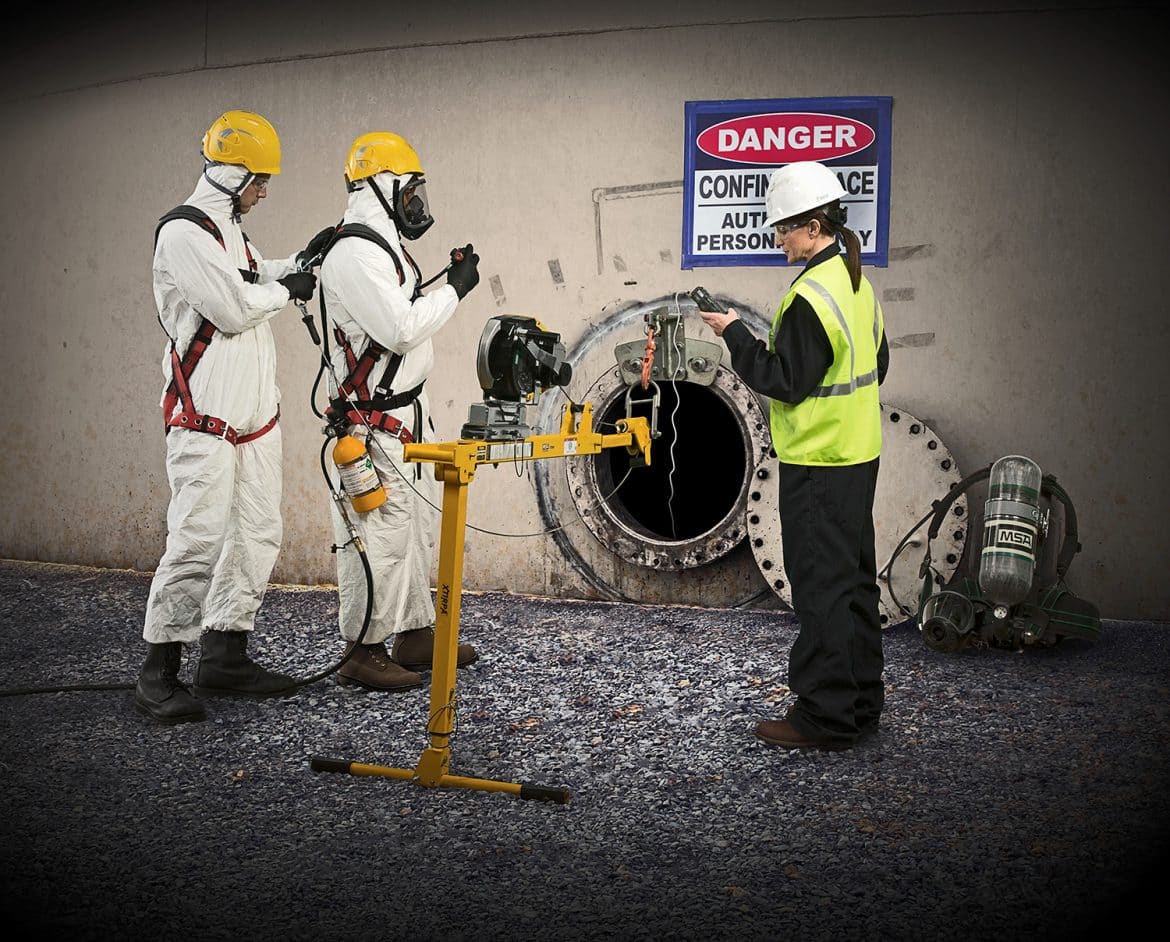If you want to work in the confined space industry, begin with a clear idea of these jobs.
You must know what spaces are referred to as confined spaces, how to qualify for these jobs and the different opportunities and responsibilities of each of them.
So, let’s get started here!
Understanding Confined Spaces
Most assume confined spaces refer to enclosed and tight places where only one person can enter. However, even a roomy space can fall under this category.
To get a better understanding, here is a list of confined spaces:
- Manure pit
- Water supply tower
- Sewer
- Manhole
- Ductwork
- Boiler
- Tunnel
- Storage bin
- Vault
- Process vessel
- Hopper
- Aircraft wing
- Tank car
However, this is not an exhaustive list. So, here are a few rules used to identify confined spaces:
- The space might contain a hazardous atmosphere.
- The space has materials that can lead to engulfment risks.
- The space can trap a human being.
- A person may experience asphyxiation while entering the space due to inward-converging walls or floors with a slope that tapers downward.
- The space contains any kind of hazard that can harm a human being’s health and compromise their safety.
- This includes all kinds of hazards like live wires, poisonous animals, etc.
How to Be a Confined Space Worker?
The most basic requirement to be a confined space worker is to undergo training and earn a Confined Space Ticket. This course includes more than just hands-on learning to work in confined spaces. A candidate must:
- Succeed in their literacy, language, and numeracy assessments.
- Have physical capacity for manual labor and flexibility to fit in small spaces.
While enrolling and practicing in training courses, you must also have a bare minimum of facial hair so that the breathing apparatus fits your face snugly with your skin.
If you already have a ticket, ensure it’s still valid. If not, you can also enroll in a refresher course.
In Australia, it’s recommended that the ticket be renewed every two years. This varies depending on the local laws and company demands.
However, this is only the basics of this industry. There are a lot of different responsibilities based on the post you want to work in.
Responsibilities of Confined Space Workers
Three types of confined space team members exist: entrant, attendant, and supervisor. Let’s know the responsibilities of each of them.
1. Entrant
These workers are at the highest risk as they must enter the limited space. Here are some rules they must abide by:
- They must know all the hazards of general confined spaces and the space they will enter.
- They must wear the right equipment of the standard quality on site.
- They must learn to use their equipment completely and in the best ways.
- They must communicate with the attendant waiting at the entry and exit points.
- If any hazardous situation arises, they must be capable of alerting the attendants effectively without losing their calm.
- They must be knowledgeable in rescuing themselves when necessary.
- If they hear an alarm, recognize a hazard, or attendants call them out, they must evacuate instantly without resistance.
- Studies from the US Bureau of Labor Statistics show that there were 1030 fatalities from confined space occupational injuries from 2011-2018. So, entrants must be focused candidates with flexibility and good response to danger.
2. Attendant
An attendant’s primary job is to monitor and assist the entrants. However, they must also have the basic knowledge and a confined space entry permit. A minimum of one attendant must be assigned for every team.
Their responsibilities are:
- They must have full knowledge of the hazards.
- They must be geared to monitor the hazards and know how to use all equipment.
- For instance, they must have air monitoring equipment to monitor atmospheric conditions of the confined space.
- They must also communicate any observed changes to the entrants and supervisor.
- They must know the effects of the hazards on entrants’ behavior and health.
- They must hold their station outside the entry/exit points unless relieved.
- They must communicate with entrants throughout the process
- They must keep note of people entering/exiting the space.
- They must evacuate entrants or seek rescue when necessary.
- They must refuse entry to unauthorized people.
3. Supervisor
A supervisor oversees the complete process and ensures all operations are running smoothly. They’re the employer’s representative and oversee entry operations. Their responsibilities include:
- They must identify and learn about the hazards.
- They must determine whether the confined space is safe to enter.
- They authorize and terminate entry.
- They cancel the entry permit.
- They must verify permits, procedures, equipment, and the efficiency and availability of rescue teams.
- They must remove unauthorized people.
- They must be trained to work as an entrant or attendant if necessary.
Conclusion
The future of confined space jobs is quite promising and needless to say, it’s a well-paying industry. So, sign up for a training course from a reputable school and prepare to secure a job in this industry!

